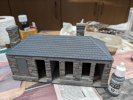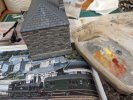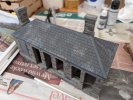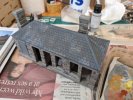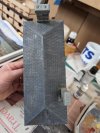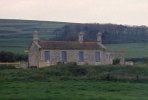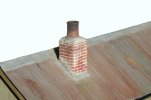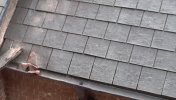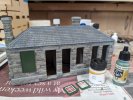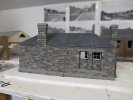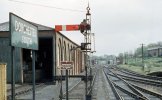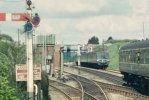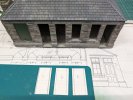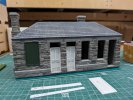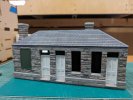Yes, you can look at several colour photos and each will appear different due to lighting, exposure and reproduction. As you say it's a case of using them as guides. Fields visits today can assist but we'd have to take into account 60+ years of weathering, lower pollution levels due to the various clean air acts and subsequent sandblasting and cleaning by new owners.
The underlying geology and quarry locations will provide a clue to the building stone colouring. Although not Bodmin, this is a crop of one of my dad's slide of Abbotsbury taken from the road in 1961 and does show variances in the stone colours despite the distance.
However, given it's location this could well be Portland group sandstone laid down during the Jurassic period whereas the Bodmin sandstones were laid down in the earlier Devonian period which would account for it's slight reddish brown colour being of a desert origin. During the Devonian period England was experiencing desert conditions. Sea levels rose during the Jurassic period leading to sandstones being laid down in marine conditions which tend to be a pale buff/yellow/very very pale beige colour.
Therefore, despite the colour photographs, I would go with the slightly brownish, pinkish, reddish sandtone building colours as you have done.
 View attachment 207755
View attachment 207755
I used Gunmetal and a grey for the flashing on this building I built several years ago. Looks a bit washed out but in reality it does have a slight sheen in places.
View attachment 207746
The colour of the slates will ultimately depend on the quarry and weathering in the final location.
For the slates on this building (an Intentio Bothy I built a few years ago) I lightly drybrushed a very pale brown/grey mixture to highlight the texture of the card slates given slates have a texture when split. They appear smooth from a distance but in close up they are undulatory.
View attachment 207745
Having built these a few years ago I need to revisit them at some point to look at the weathering and some sublte green and pale brown washes.
Apologies for the geological and other interruptions.

